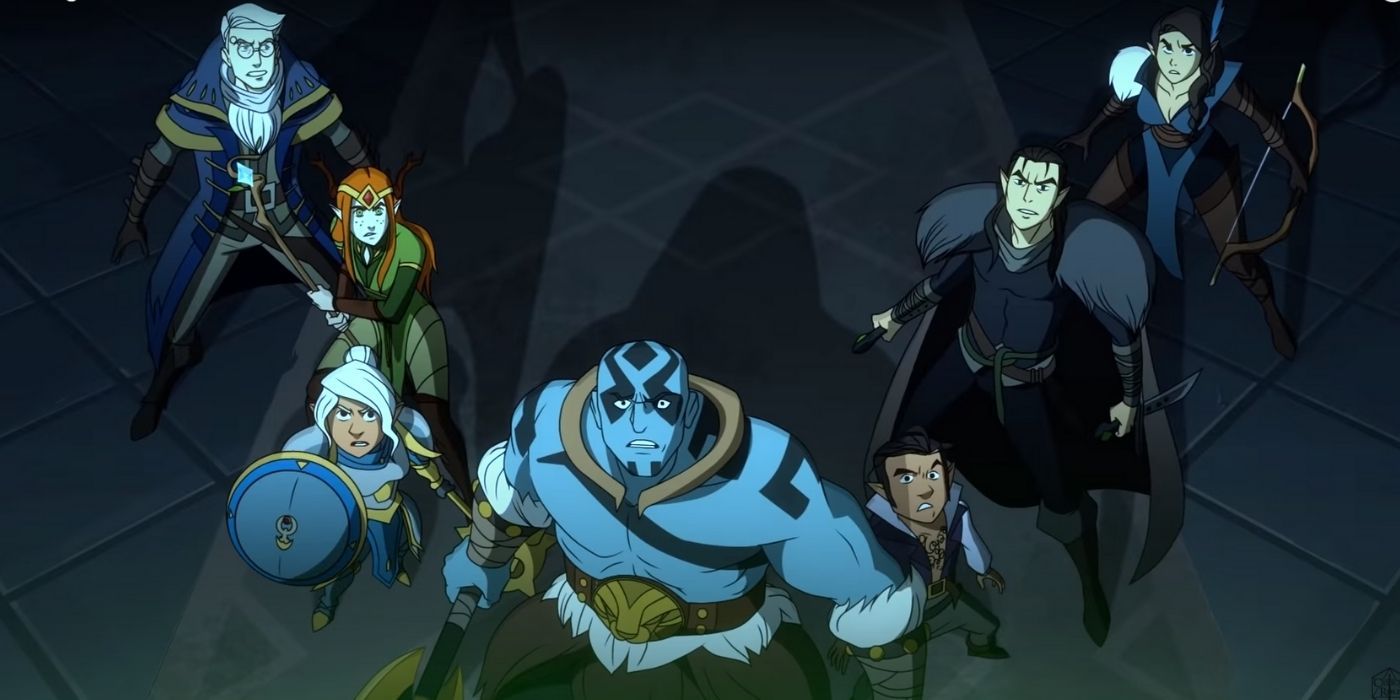A new update for The Legend of Vox Machina - an upcoming animated series based off the Dungeons & Dragons sessions played by Critical Role - features voice actor Sam Riegel explaining the process the team is undertaking for making their first campaign a television reality.
In March 2019, Critical Role set up a Kickstarter to fund The Legend of Vox Machina, which massively surpassed the asking goal of $750,000 within the first day. The Legend of Vox Machina is based on Critical Role's first campaign, and will initially serve as a prequel to the group's first live tabletop adventure that will eventually air on Amazon Prime. Since then, the team has released only a handful of updates detailing the process so far which included assembling a writing team and partnering with an animation studio. The show was originally projected to air in the fall of 2020, but has since been pushed back to mid or late 2021.
The most recent update comes from Critical Role's very own Sam Riegel - who plays the Gnome Bard Scanlan Shorthalt in The Legend of Vox Machina. Riegel explains how the animation's production is progressing in a video on Critical Role's YouTube channel, including what kind of challenges the team must face due to the current COVID-19 pandemic.
Critical Role Animation 101 With Sam Riegel: The Legend Of Vox Machina
Fans of Critical Role, or Critters, can easily understand exactly what all is involved due to Riegel's quirky demeanor and Twitter user WendyDoodles's simple and clean sketches that help break down the animation steps in a whimsical and straightforward manner. Coming up with the story was one of the easier tasks, as most of it comes from the team's gameplay materials. Because The Legend of Vox Machina show will be a prequel, much of its content comes from sessions the group played prior to airing live. A team of writers then hashes out the details and reworks the content for television, creating scripts that the cast reads out loud during what they call "table reads."
A visual development process fleshes out color palettes, character designs, landscapes, etc. In addition to Critical Role's cast, a team is also sourcing other voice actors and even some notable, yet still unnamed, screen actors to play extra characters like monsters and shopkeepers. Because of the pandemic, the cast is having to record their voices in their home closets. These takes are then refined in a "radio play" so it sounds like everyone is actually speaking together. Next a design process polishes The Legend of Vox Machina's characters, backgrounds, and prop designs established during visual development. Storyboard artists sketch out and revise scenes to look appropriate for television. An animatic process then weaves the radio play and storyboard outcomes together, along with music and sound effects.
A finished and locked animatic of The Legend of Vox Machina is sent to the Titmouse animation team where each episode is hand-drawn, which understandably takes months to do. The animation is sent back, and the cast re-records sound effects and some dialogue to better tie everything together. The music and VFX are added, and everything is then blended. A final edit marries each segment for a final product. This must be done for two seasons of The Legend of Vox Machina episodes, which is why Critical Role's Dungeons & Dragon animation series is taking as long as it is. Riegel concludes his walkthrough by endorsing how much worth the wait the show will be, giving Critters plenty to look forward to in the near future.
Sources: Critical Role/YouTube, @WendyDoodles/Twitter

